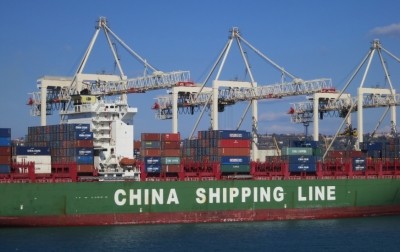Regulation changes in China may bring feed market repercussions

A recent US Department of Agriculture (USDA) Global Agricultural Information Network report assessed the annual grain and feed use in China and offered thoughts on the potential outcome of a newly announced policy ending price protection for corn.
“On March 28, Liu Xiannan, director of the economy and trade office of the National Development and Reform Commission (NDRC), announced that the temporary reserve program in Northeastern provinces and Inner Mongolia will be replaced by a new mechanism of ‘marketized purchases,’” reported the USDA. “The government did not disclose any details on how the ‘marketized purchases’ would operate after the cancellation of the floor price in these regions.”
Additionally, the Chinese Ministry of Commerce is conducting an anti-dumping and countervailing duty investigation on dried distillers’ grains (DDGS) imports from the US, said the agency. DDGS import dropped by 39% in February, and a preliminary determination that may include imposition of preliminary duties is expected this summer.
“What we all need to do is watch the headlines and realize that the trade relationships between China and the US are complex,” said Tom Sleight, president and CEO of the US Grains Council, an agricultural exporting group that has been working with China for many years. “The US and China have to figure out this trade relationship.”
The agricultural trade between the two countries may not be at its peak currently, but it benefits both to develop a stable relationship, he told FeedNavigator.
Effects on trade
US industry is continuing to cooperate with the ongoing countervailing duty and anti-dumping investigation into DDGS, said Sleight. A majority of the industry has been taking part in the probe, as it was a priority to have a strong and cooperative response.
“The US side will be concluding their responses in about another week then it’s in the hands of the Chinese investigators,” he said. “It’s a strong robust response.”
The Chinese inspectors are then set to review the information and decide on a course of action, he said.
The council also has been exploring other markets, like Mexico, Vietnam and Morocco, for US DDGS, said Sleight. Previously, China has had the bidding power to capture much of the export supply but now other countries will have more access to the market.
“They aren’t able to pick-up the full slack, but we’ve been talking to other buyers,” he said. “The supplies are there, and ocean freight is reasonable, and what we’re going to be doing will be pushing that up and making sure that we reach out to all possible markets.”
Many details are not known regarding the new Chinese policy on corn, he said.
“The devil is in the detail on this one, and we’re going to have to see how the policy plays out into the harvest season,” he said. “There could be excess feed grain and corn on the market, but we’ve heard that it isn’t in the best [condition].”
Chinese imports of sorghum are likely to be slightly down, he said, but the market is still considered strong, he said. “There could be an influence on others like feed wheat, barley, and cassava,” he added.
“US corn has been locked out of that market [China] for the last couple of years, but this year they’re buying some corn,” he said. “[It’s] going to continue to play out and we’re going to be watching very closely.”
Report details
Changes to the Chinese corn policy came after US planting had started, said the USDA. Unspecified subsidies are set to be put in place to support farmers as it was too late in the season for many to change planting plans.
“MY [marketing year] 2016/17 corn production is forecast at 218 million metric tons (MMT) based on average yields and three percent decline in acreage,” the agency said. “MY 2016/17 corn consumption is forecast at 225MMT, up 7MMT as lower corn prices and subsidies to corn processors boost feed and industrial demand. MY 2016/17 corn imports are forecast at 1MMT, 1.5MMT lower than MY 2015/16, as falling corn prices will make imports less attractive.”
Wheat production for 2016/17 is set to increase to 130.5MMT, said the agency. But wheat consumption is expected to be down, with feed usage sliding. Imports are expected to improve for high quality wheat.
“MY 2016/17 sorghum and barley imports are forecast to fall to 5MMT and 6MMT respectively as falling corn prices reduces demand for imported feed ingredients,” it said. “Estimated MY 2015/16 sorghum and barley imports are also lowered to 6MMT and 6.9MMT respectively as traders are already responding to falling corn prices by reducing imports.”
Additionally, importers are seeing delays for sorghum imports to China from the US, said the agency. “CIQ [China Inspection and Quarantine] offices in coastal provinces are privately warning local importers to limit sorghum imports and that there will be increased inspections and delays,” it added.
Sorghum production is expected to expand by about 100,000MT, said the agency. However, its use in feed is predicted to drop in 2016/17 from the availability of cheaper corn.











